Purple dead nettle (Lamium purpureum) is an easily foraged edible plant that is likely growing in your backyard or nearby. Often considered a common “weed,” it has been traditionally used for both culinary and medicinal purposes, making it a good foraging opportunity this spring!
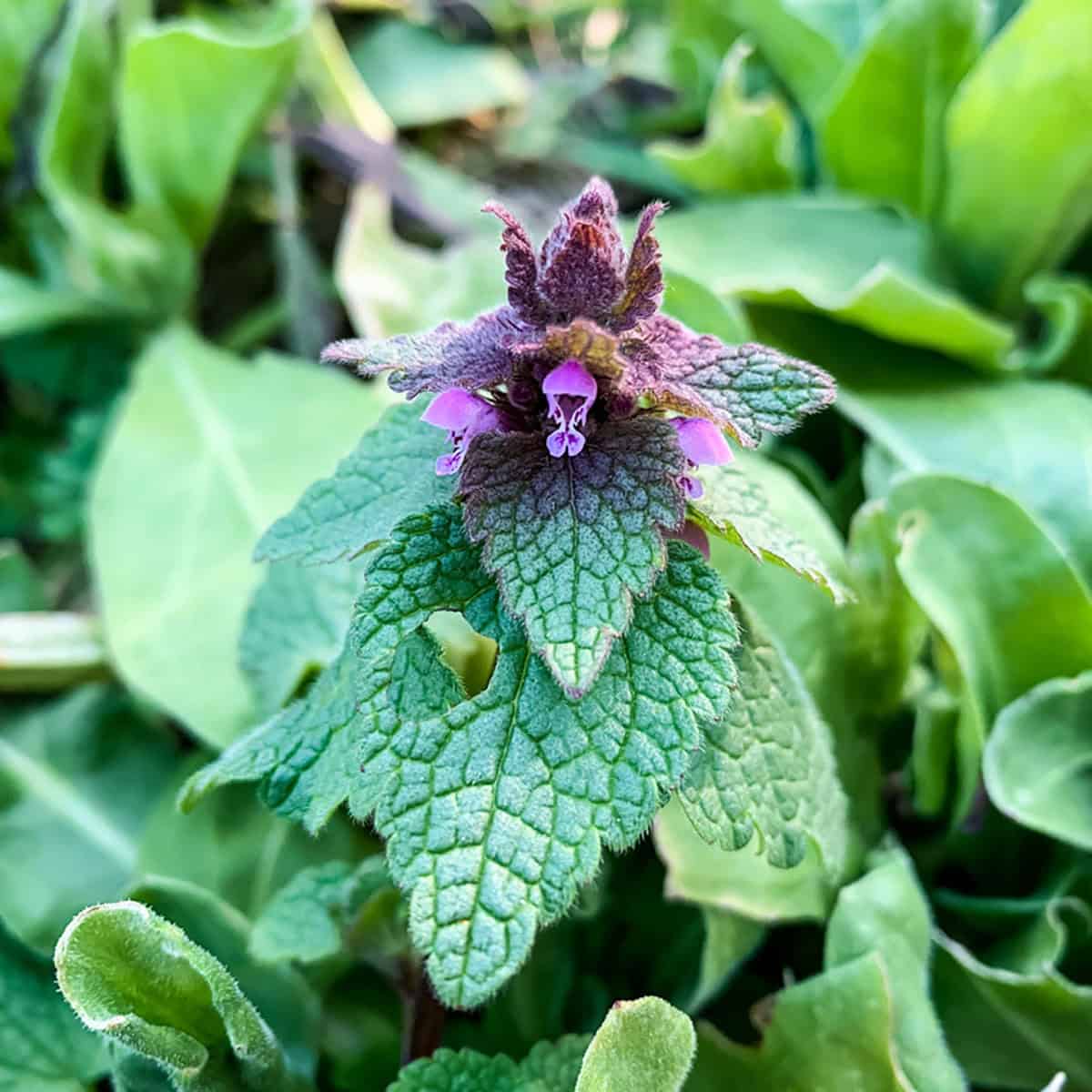
Want to save this post for later?
Wildcrafting Weeds
If you want to learn more about the edible and medicinal weeds that surround us and how to use them, check out my eBook: Wildcrafting Weeds: 20 Easy to Forage Edible and Medicinal Plants (that might be growing in your backyard)!
Foraging Purple Dead Nettle
Because of its widespread nature, foraging for purple dead nettle (Lamium purpureum) is usually pretty easy.
It is native to Europe and Asia, but has become commonplace in North American gardens and disturbed areas.
I can almost guarantee that you’ve seen purple dead nettle growing at one time or another.
You may not have realized it, as it can sometimes be fairly inconspicuous, but if you really start to pay attention to the plants around you, I’m certain that you will see it growing.
Related: What to Forage in Spring: 20 Edible and Medicinal Plants and Fungi
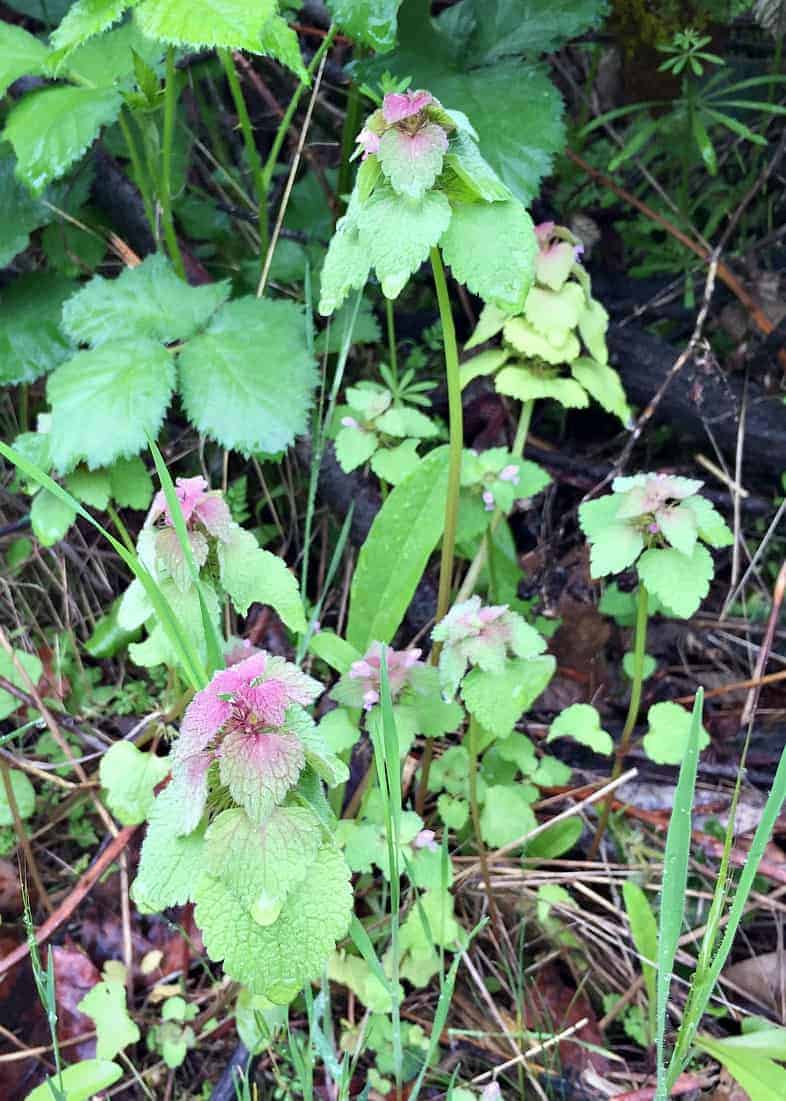
Purple dead nettle is one of those plants that when you see a picture of it, you immediately recognize it, but never knew what it was called.
This is how I was with plantain – I’d seen it my entire childhood, and up until I was almost 30 years old, before I had any idea of what it actually was!
I was happy to discover its benefits, just as I was with purple dead nettle.
It sometimes grows in huge patches, which can be annoying if that patch happens to be your garden, but it does make collecting it easier!
I have a good bit of it growing in my backyard, and I see it everywhere when I’m out on walks. I finally decided to look it up to see what it was, and was happy to find out that it’s edible and medicinal!
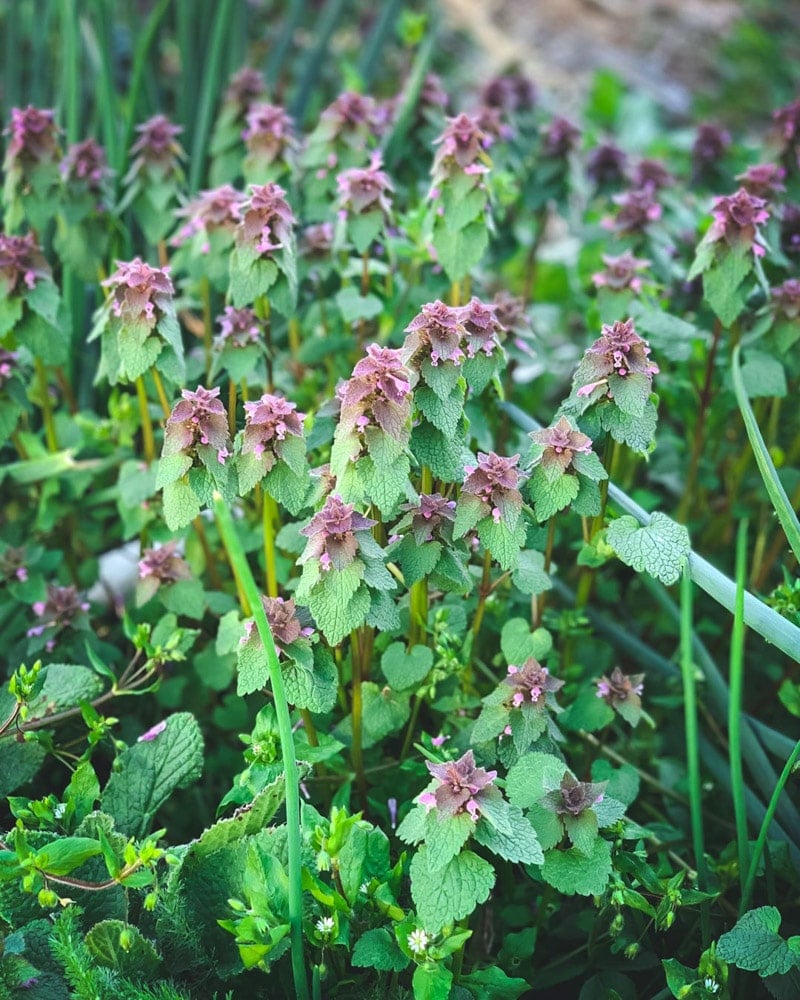
Identifying Purple Dead Nettle
Purple dead nettle is in the mint family, and is called “dead nettle” (or sometimes “deadnettle”) because of its apparent resemblance to stinging nettle, minus the sting.
This confuses me somewhat, because I don’t think it really looks like true nettles at all, but to each their own.
Purple dead nettle is easy to identify with its square stem (like all mint family plants), fuzzy leaves, and purple tops with little pink flowers.
They are usually fairly low growing, but can sometimes reach up to 8-10 inches tall.
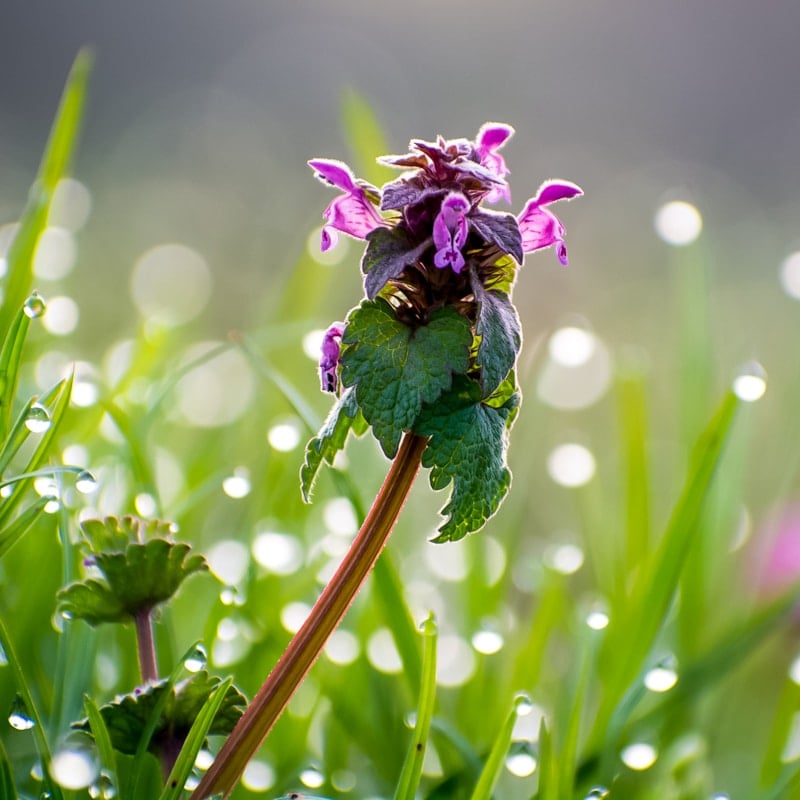
Purple Dead Nettle Look-alikes
Purple dead nettle does not have any toxic look-alikes.
It is sometimes confused for henbit (Lamium amplexicaule) which is closely related and another tasty edible weed.
The main difference between purple deadnettle and henbit is the arrangement of the leaves. Henbit has leaves that surround the stem, while purple dead nettle has triangle shaped leaves.
You can see the difference between purple deadnettle (left) and henbit (right) in the photo below.
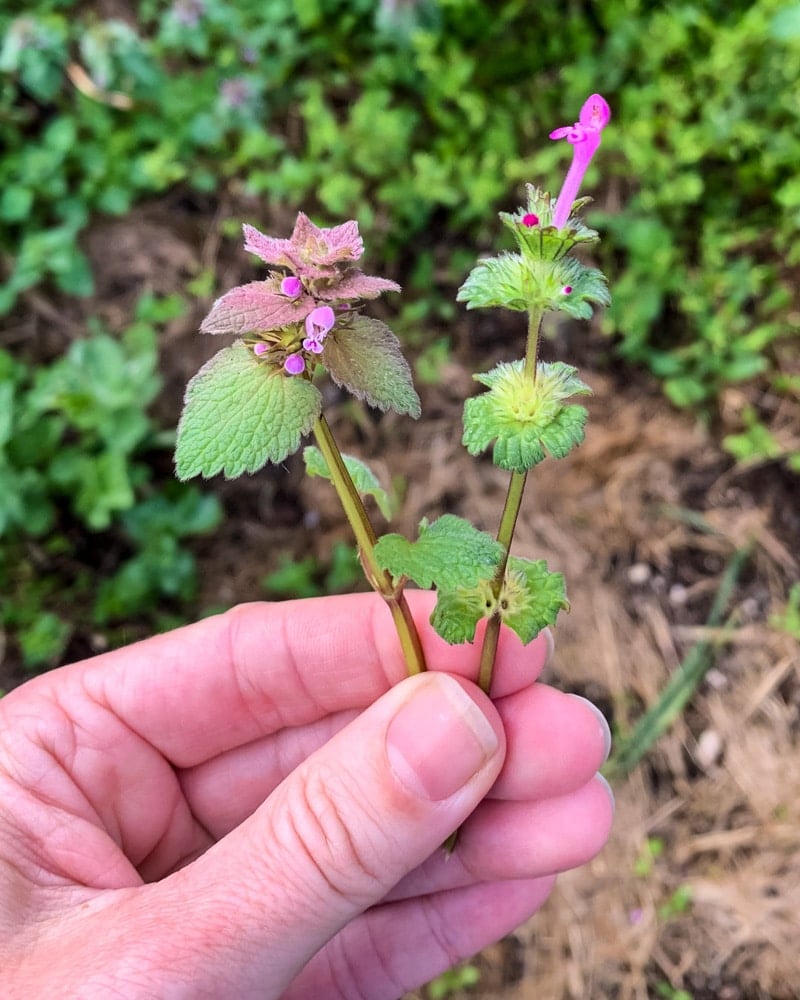
Edible Uses of Purple Dead Nettle
Purple deadnettle is not only a wild edible green, but a highly nutritious superfood. The leaves are edible, with the purple tops being even a little sweet.
Since the leaves are relatively fuzzy, they are better used as an herb garnish or mixed with other greens in recipes, rather than being the star of the show.
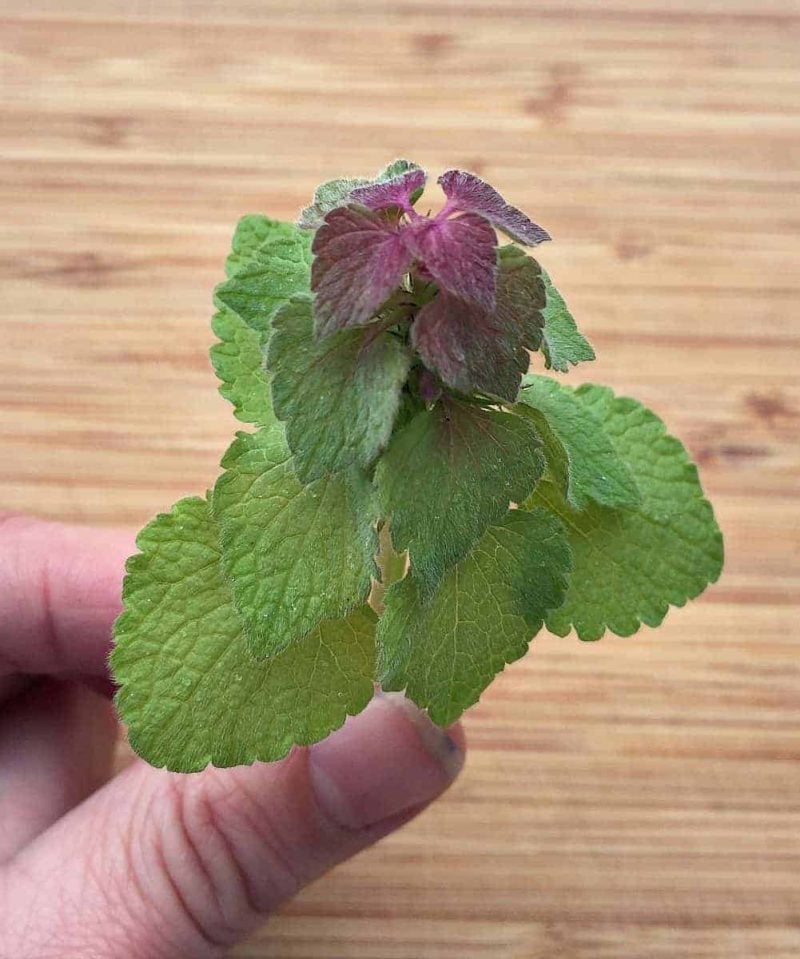
Use fresh dead nettle along with chickweed, dandelion greens, and other backyard weeds to make a wild greens pesto.
Purple deadnettle can also be added to soups, salads, or blended into smoothies. Basically any way that you would use any other green leafy vegetable or herb.
Related: 13 Early Spring Edible Wild Greens
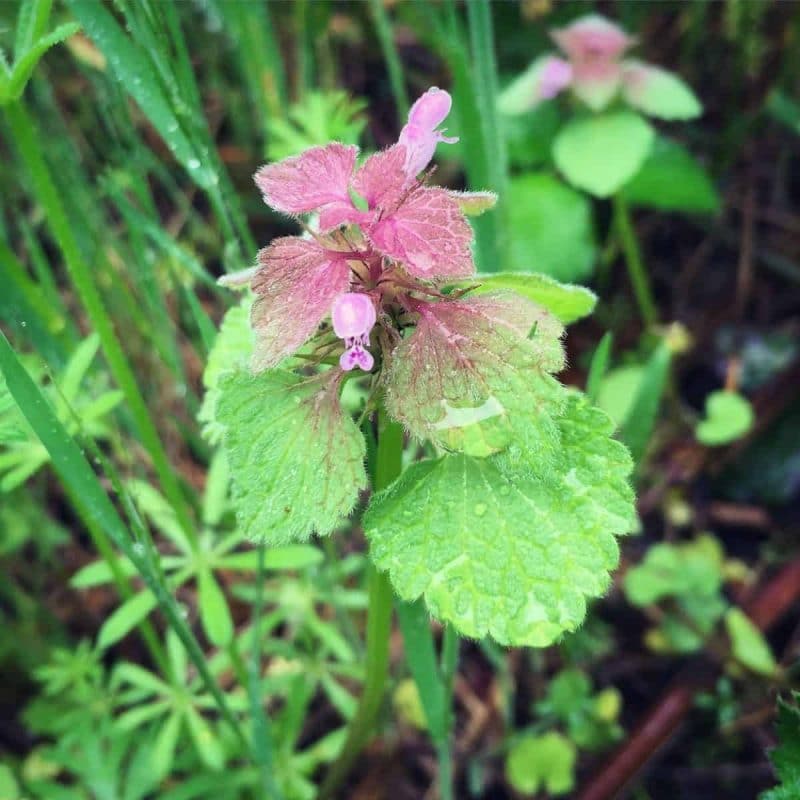
Medicinal Uses of Purple Dead Nettle
In herbal traditions, purple dead nettle has been described as having astringent, diuretic, diaphoretic, and mild laxative properties. It also contains compounds with anti-inflammatory, antibacterial, and antifungal potential, though more research is needed to fully understand its effects.
The leaves have been traditionally applied to minor wounds or cuts, sometimes as a poultice, though scientific evidence on its wound-healing properties is limited. This is similar to how you would use yarrow or plantain.
Purple dead nettle would also make be a good candidate for a homemade herbal salve.
Here is a post for how to make dead nettle salve three ways.
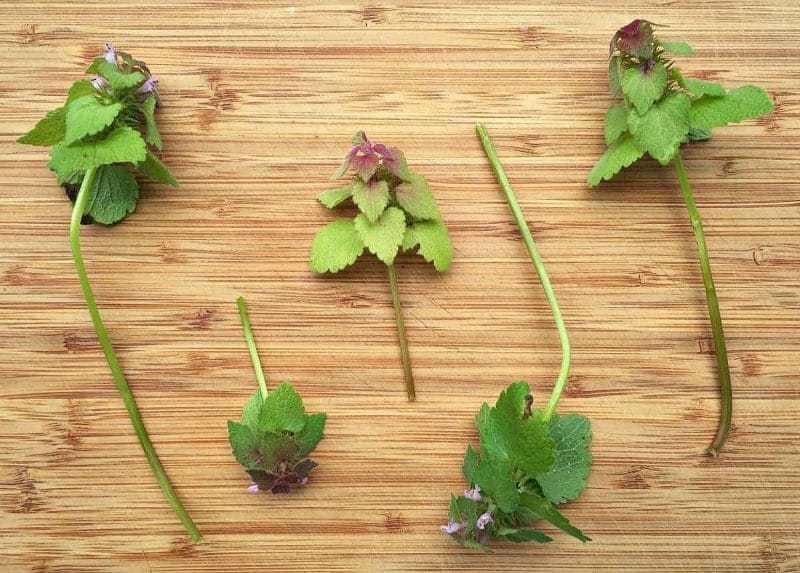
Purple dead nettle can be prepared as an infusion or tea, using either fresh or dried plant material. While some herbalists use it for its potential benefits, consuming it in large amounts may have a mild laxative effect.
It can alternatively be made into a tincture using the same method as this lemon balm tincture.
Some reports suggest it may support kidney function and help with seasonal allergies, but clinical research is still lacking. More studies are needed to confirm its effects on allergies.
Studies suggest that Lamium purpureum (purple dead nettle) contains bioactive compounds, including flavonoids and phenolic acids, that may contribute to its traditional medicinal uses. With the entire genus, Lamium, used in folk medicine for its antispasmodic, astringent, anti-inflammatory, and antiviral properties.
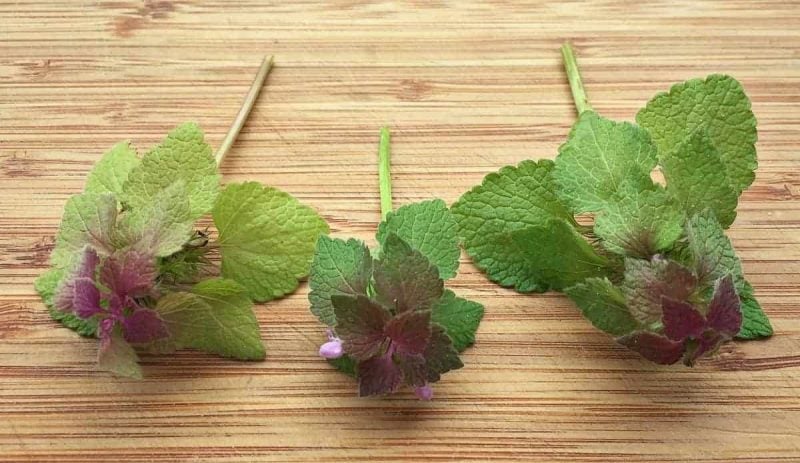
Other Uses for Purple Dead Nettle
Purple dead nettle can be given to chickens as a nutritious food, along with other weeds like henbit and chickweed. I chopped some up and gave it to my young chicks, and they went absolutely bonkers over it!
It is also an important plant species for bees.
Not only do bees seem to prefer it over other plants (even dandelion), but it is one of the first plants to flower in the spring. It may even flower in mild climates through the winter, making it a vital bee forage.
It can even be used to make a natural dye for wool and yarn!
Here are more ideas and recipes for how to use purple dead nettle.
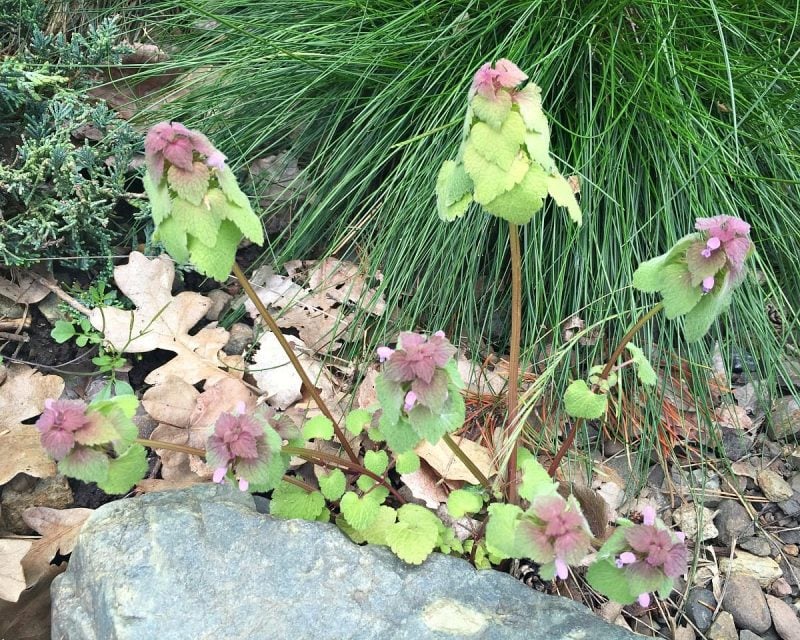
That’s a lot of benefits for one little plant that is often frowned upon! This is what I love about so many “weeds,” they are usually extremely beneficial for us, and easy to find.
I’m going to start picking more purple dead nettle while I can!
Want to learn more about medicinal herbs? Check out The Herbal Academy!
Do you have any purple dead nettle growing near you? Did you know that it was edible and medicinal?
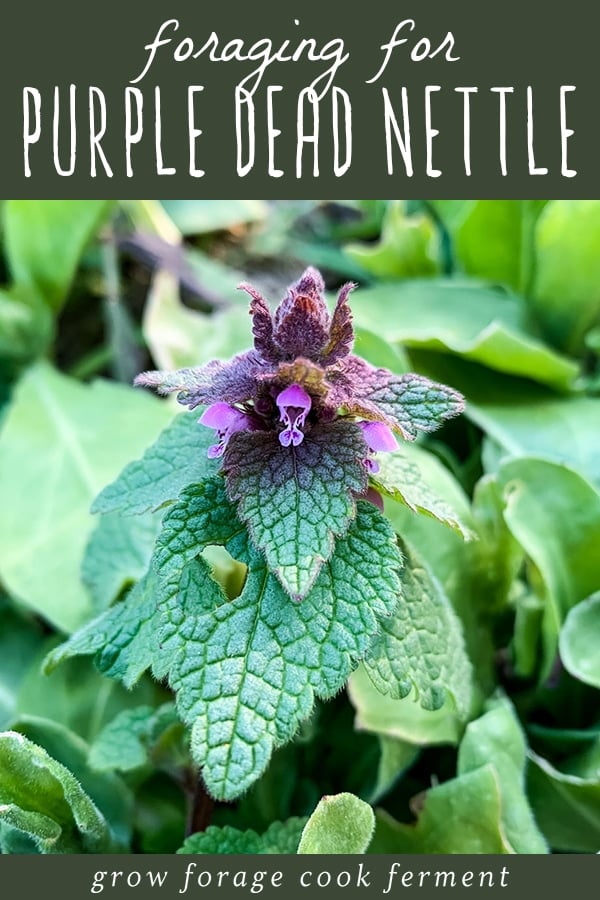

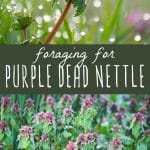
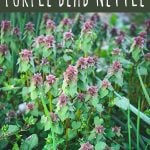
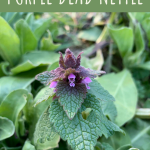
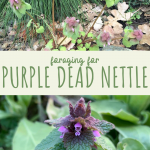
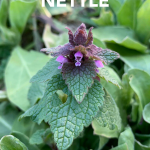

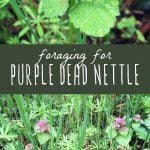
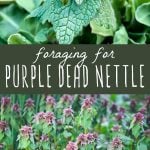

What’s the best way to wash this before eating it? Also, what’s the best way to dry herbs like this and preserve them for future use?
Thank you
Rebecca
I made a pesto and it upset my stomach. How much is safe to consume?
I’m sorry that happened! It is a very safe plant to eat with no toxicity at all. I’ve known many people to make pesto with it without any bad effects.
I didn’t know it was beneficial! Just pulled up some out of my garden plot and noticed the bees liked it. Now I feel awful! Now I know better!
Love this and all the posts on your blog. Wish you could sell an ebook with all your plants, and another with your recipes.
Yes, I have been using it for years, in healing salve so far, but now will start using it in my kitchen! We have the mild Pacific NW winters and yes, it appears early and the bees do love it. Our season is long over now in mid-May. I can’t wait for next year! Thank you Coleen!
These always looked like little pagodas to me, the way they get progressively wider towards the bottom.
We have so much of this growing here i collected a basketful and made natural dye for our yarn. I am bothered by the smell of this weed so I’m not sure I will eat any but it is a good natural dye material.
Thank you so much for sharing this useful information!!! Since I have become more interested in plants I look at all of them differently. I found this one growing alongside my house and it was not there last year. Glad to now know what it is!!
…my granny used to make a “spring tonic” with this along with sassafras root….i loved it and still use it today…
Whats the recipe for spring tonic?
Thanks for this info! I have tons of it growing and left it for the bees because I didn’t know it was medicinal or edible!!!! GREAT! I made a salve with plantain and calendula last year and plan on repeating that this year. Could I dehydrate some of this dead nettle and add it into the healing salve?
Thanks, again. Think I’ll go pick some now!!! Dry some for tea, toss some in a salad!!
Thank you for finally letting me know what this wonderful plant is growing in my yard! I’m not very good at identifying plants….I was actually thinking about this plant just a few days ago, wondering what it is and how I could use it! I’m a firm believer in using what God has so wonderfully given us right under our noses! Now I’m going to have to find out more about it.
I didn’t see the Latin name for stinging dead nettle in the article. Do you know what it is? Thank you.
Lamium purpureum
Stinging nettle is Urtica diocia
I was wondering what a salve made with it could be used for.
I just went and picked an armful and we had it for lunch ! Lightly sautéed with wild garlic and olive oil , served with some pasta. Delicious! The leftovers will go to our pets !
how much is “too much” to consume in a serving? I love this flower and I’m glad I finally have a name to put to it as well as the bonus of finding out it is edible and medicinal.
In the photo of the dead nettle in the feild amongst other plants…. What’s the one plant that is overall round margin but pronounced inndented kinda statburts-y) like a mallow with really deep significant sindentation…. They also turn yellow and bright red…. If that helps. I can’t figure it out for the life of me!!
I was recently wondering that same thing! They are wild geranium :)
So lovely to find all sharing plant identification.
I have always seen this and didn’t know what it was. I LOVE stinging nettle, so I need to try this one.
Is this the same as
Henbit (Lamium amplexicaule)–also called, dead nettle, blind nettle, bee nettle–can be a pest of the lawn or garden
Henbit and dead nettle are very similar, but different plants. Both are edible, though!
it reminds me of lemon balm without the red color…blessings..m
Can you describe the flavor? I’ve never found it to be super tasty, but it’s so abundant, I should probably give it another try. I’d love to know what it tastes like to you.
What an eye-opener! I have always despised this “WEED” growing amongst my flowers! NOW I’ll look forward to seeing it! Have TONS growing in our yard!
Isn’t it amazing how a change of perspective can change our lives in so many little ways!
Just to clear names, in the south and midwest we call it horse mint. Almost all mints can be identified by the square cross section of the stem.
Thats the cool thing about wild plants too – they have many names. In india they say the more names u have the more u r loved! 💖
we have been trying to avoid the term weed – fact is there is no clear definition of a weed, it is a purely subjective term and overused by people that would use it to impose their own criteria on yours
(curiously, even the term “weed” is flagged)
I agree with all of you about how wonderful plants are and how fun it is to find out uses for new plants you weren’t aware of! Yeah, everyone knows my definition of “weeds” is not the same as anyone else’s! I’ve heard weeds are described as any plant growing where you don’t want it…well, since we WANT these plants, they aren’t weeds, right? I love using inconspicuous plants everyone ignores.
I was wondering what this little flowering plant was. Thanks :o)
There’s a small european nettle that grows in gardens here on the northwest california coast. I think it is Urtica urens. It looks a bit like the dead nettle, which I do have in my garden and had no idea it was palatable. I’ve always liked it and let it grow along with my other favorite little weeds.
Awesome! Thanks for this – I have a bunch of it growing and just got ready to pull it as weeds… Now I shall eat it.
You should make your nettles pesto with it!
Is there a corresponding recipe for the pesto that someone would like to share? Thanks!
From Marblemount Homestead: How to Make Nettle Pesto
How best do I prepare it for medicinal uses? I thought I read somewhere it contains quercetin and we have allergy issues here. Would it just be tea and how much would be needed to relieve allergies? I like the salve idea, I’ll probably add that ingred. to by normal skin salve. Thank you!
I love using the local weeds, they are so unappreciated! Thanks for reminding me of this useful herb – shared to facebook and pinned – yay!
I have a lot of this growing in my garden beds. Thanks for the information. I’ll use some for myself and leave the rest for the bees. It make s a nice ground cover, helps keep other pesky weeds out.
Our Bunnies love it! I knew we could eat it too, but did not know it was medicinal! Thanks!
I have tons! So glad to know it’s useful.